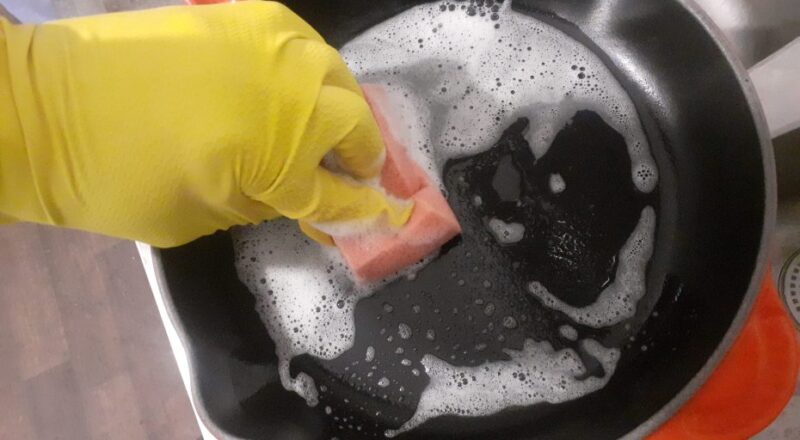Removing heavy rust from cast iron can seem like a daunting task. Cast iron cookware is cherished for its durability and superior heat retention, making it a staple in many kitchens. However, over time, moisture and neglect can lead to rust. Knowing how to remove heavy rust from cast iron is essential to preserving these valuable kitchen tools.

Why Cast Iron Rusts
Cast iron rusts due to its composition. When iron is exposed to moisture and air, it forms iron oxide, more commonly known as rust. This process is accelerated in environments with high humidity. Understanding why your cast iron rusts is the first step in preventing and treating it.

The Importance of Proper Care
Proper care is essential to maintaining your cast iron cookware. Regular seasoning, proper cleaning, and correct storage can prevent rust from forming. However, if your cast iron has already rusted, dont worry. There are effective methods to restore its original condition.

Preparing to Remove Rust
Before you begin the rust removal process, gather your supplies. You will need:
- Steel wool or a wire brush
- Baking soda or white vinegar
- Water
- A sponge
- Towels
- Cooking oil
Step-by-Step Guide to Removing Heavy Rust
Step 1: Clean the Cast Iron
Start by thoroughly cleaning the cast iron with warm soapy water. Use a sponge to remove any loose debris or dirt. Dry the cookware completely to prevent further rusting.
Step 2: Apply Baking Soda or Vinegar
For light to moderate rust, sprinkle baking soda over the rusted areas. For heavy rust, soak a cloth in white vinegar and cover the rusted areas. Leave it for a few hours to break down the rust.
Step 3: Scrub the Rust Away
Using your steel wool or wire brush, scrub the rusted areas thoroughly. This may require some elbow grease, but persistence will pay off. Be sure to scrub in circular motions to ensure all rust is removed.
Step 4: Rinse and Dry
Once the rust is removed, rinse the cast iron thoroughly with water to remove any residue. Dry it completely with towels. Ensure no moisture is left, as this can cause new rust to form.
Step 5: Re-season the Cast Iron
After removing the rust, it’s crucial to re-season your cast iron. This process restores the protective layer that prevents rust and creates a non-stick surface.
To re-season, apply a thin layer of cooking oil to the surface of the cookware. Place it in an oven preheated to 350F (175C) for one hour. Allow it to cool completely before use.

Preventing Future Rust
Prevention is key to keeping your cast iron rust-free. Here are some tips:
- Never soak your cast iron in water. Instead, wash it promptly after use.
- Dry your cast iron completely after washing.
- Store your cast iron in a dry place with good air circulation.
- Regularly season your cast iron to maintain its protective layer.
FAQs
Q: Can I use a dishwasher to clean my cast iron cookware?
Answer: No, it’s not recommended to use a dishwasher for cast iron. The dishwasher’s harsh detergents and prolonged water exposure can strip the seasoning from your pan and cause rust.
Q: What kind of cooking oil should I use to season cast iron?
Answer: It’s best to use oils with high smoke points, such as flaxseed oil, vegetable oil, or canola oil. These oils bond well with the cast iron surface and create a durable, non-stick layer.
Q: Is it safe to cook with cast iron cookware that has some rust?
Answer: While small amounts of rust arent likely to harm you, its best to remove rust before cooking. Cooking on a rusty surface can cause the rust to transfer to food, affecting the taste and texture.
For more details on cooking with cast iron, check out this comprehensive guide on cast iron recipes. Understanding proper cast iron care and cooking techniques will ensure your cookware lasts a lifetime.
If you’re looking for more tips on cast iron care, including how to properly season your cast iron skillet, check out this detailed guide.
Happy cooking!
As an Amazon Associate, I earn from qualifying purchases.

